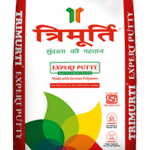
Picture yourself as an investor stepping into a bustling marketplace—not one filled with trendy gadgets or clothing, but instead crowded with traders exchanging promises for gold, wheat, oil, and coffee months before they’re even harvested or produced. This vivid scene perfectly illustrates commodities trading through futures contracts, a fascinating and potentially rewarding realm even beginners can navigate confidently once they grasp the basics.
Understanding Commodity Futures at a Glance
A commodity future is essentially a contract—an agreement between two parties—to buy or sell a specific quantity of a commodity at a predetermined price, on a fixed future date. When you engage in commodities trading via futures, you aren’t immediately purchasing or selling physical goods. Instead, you’re trading contracts that represent future delivery. Traders often buy futures contracts to speculate on price movements, aiming to sell later at higher prices, while others use futures to hedge against market fluctuations.
Consider a coffee roaster who worries about rising coffee bean prices due to unpredictable weather conditions in Brazil. To safeguard his business against possible price hikes, he can buy coffee futures contracts today at a locked-in price. If prices indeed rise, his futures contracts protect him against increased costs. Conversely, speculators betting on coffee price increases may purchase contracts hoping to profit if their predictions are correct.
Getting Started: Steps for Beginner Traders
For beginners diving into commodities trading, the journey typically starts with education and choosing the right trading platform. First, familiarize yourself with commodities markets, including energy commodities (like crude oil and natural gas), precious metals (gold, silver), and agricultural products (corn, wheat, and soybeans).
Next, select a regulated broker or trading platform. It’s essential to choose one that suits your needs, offering user-friendly tools, educational resources, and solid customer support. Most platforms allow you to practice with a demo account first, giving you the confidence and experience needed to start trading live futures contracts.
Common Strategies in Commodity Futures
Beginners in commodities trading usually start with straightforward strategies. Trend-following is a popular method, where traders buy futures contracts when the market trends upward and sell when trends turn downward. Another common approach is breakout trading—buying futures when prices rise above historical resistance levels, suggesting potential upward momentum.
Additionally, newcomers often engage in fundamental analysis, assessing global economic factors, geopolitical tensions, and even weather conditions to predict commodity price movements accurately. These foundational strategies can help you navigate market complexities more confidently.
Risks and Rewards of Commodity Futures
As attractive as commodities trading may seem, beginners must approach it with realistic expectations. Commodity futures offer significant leverage, meaning you can control large contract values with relatively small upfront deposits. While leverage can amplify profits, it can equally magnify losses, making risk management crucial.
Understanding market volatility, setting stop-loss orders, and maintaining disciplined trading practices will help minimize risks. Many seasoned traders advise newcomers to start small, learn continuously, and gradually increase their trading commitments as they gain experience and confidence.
Navigating Your Commodities Trading Journey
Stepping into commodity futures can feel daunting initially, but with proper preparation and prudent strategies, you’ll find yourself navigating this dynamic market comfortably. Remember, success in commodities trading doesn’t depend solely on luck—it’s built upon knowledge, disciplined risk management, and a willingness to continually learn. Embrace these principles, and the commodities market could become an exciting and lucrative addition to your investment portfolio.





